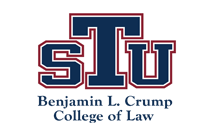Proportional Liability: A Comprehensive Rule to Apportion Tort Damages Based on Probability
Document Type
Article
Publication Title
North Carolina Law Review
Abstract
In many tort cases, actual causation may be uncertain; under existing law a jury may find by a preponderance of the evidence that but for causation was 'proved" when in fact it did not exist, or that but for causation was not '"proved" when in fact it did exist. To remedy the inefficiencies and injustices arising from this problem, Professor Makdisi proposes in this Article that the tort system dispense with the element of causation in fact and require instead probable causation. Furthermore, as his analysis illustrates, when probable causation is proved, damages should then be allocated in proportion to the probability of causation. After explaining how this approach would better deter inefficiency and promote corrective justice, Professor Makdisi examines misconceptions about and abuses of the current system of proof by a preponderance of the evidence. The Article then identifies steps that courts and other legal scholars have already begun to take in the direction of probable causation. Finally, Professor Makdisi discusses the obstacles to determining an accurate probability of causation and concludes that proportional liability based on probable causation would be very similar to the common use of proportional liability found in other familiar areas of the law.
First Page
1063
Last Page
1101
Publication Date
6-1989
Recommended Citation
John Makdisi, Proportional Liability: A Comprehensive Rule to Apportion Tort Damages Based on Probability, 67 N.C. L. REV. 1063 (1989).

